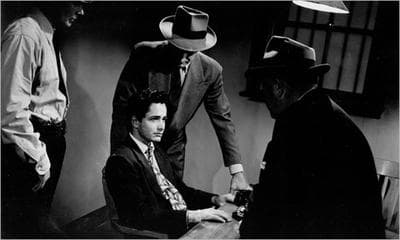Advertisement
The Strategy Behind A Police Interrogation
Resume
The police interrogation is a familiar event on popular crime shows like "Law & Order" and "CSI." The detective slams an incriminating folder on the table, and demands a confession. And they often get one.
The same thing happens in real life, even if things don't always go as planned. A few years ago in Massachusetts, police in Worcester got a 16-year-old girl named Nga Troung to confess that she smothered her own baby. A judged ruled that the detectives used deception and deemed that confession inadmissible.
But the police were using an interrogation strategy called the Reid technique, which has been the standard for law enforcement officials for many years. Proponents say that, when employed correctly, it's a tough but reliable way to compel the accused to confess to their crimes. But critics say it's coercive, and often leads to false confessions.
Guest
Douglas Starr, co-director of the graduate program in science journalism at Boston University. He tweets at @douglasstarr.
More
WBUR: Anatomy of a Bad Confession
Excerpt
This segment aired on December 10, 2013.
